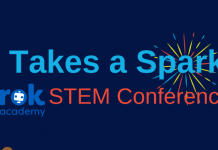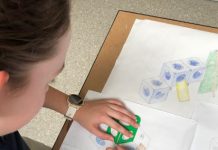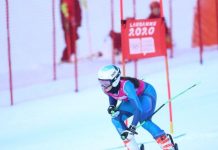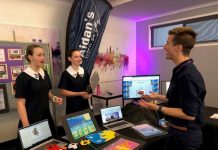 Using drones in the primary years builds critical thinking and problem-solving skills in addition to technical skills. Drones are very much part of our future and there will be many students who are in the primary years now, who will indeed work with drones when they leave school. It is important to give our students the opportunities to engage with drone and robot technology to enable them to become confident and be equipped to be creative and innovative with it.
Using drones in the primary years builds critical thinking and problem-solving skills in addition to technical skills. Drones are very much part of our future and there will be many students who are in the primary years now, who will indeed work with drones when they leave school. It is important to give our students the opportunities to engage with drone and robot technology to enable them to become confident and be equipped to be creative and innovative with it.
Starting with students in the lower grades observing drones flying and discovering their capabilities through books such as ‘Pippa and Dronie’ by Paul Mead & Sarah Davies and ‘Drone Adventure’ by Chris Mather is a great starting place. As the students’ progress through the primary years they learn how to build, program and pilot their own devices.
 Activities involving drones captures a students’ curiosity and engagement. Drones have been incorporated into many units of work across the curriculum in the primary years.
Activities involving drones captures a students’ curiosity and engagement. Drones have been incorporated into many units of work across the curriculum in the primary years.
Some examples follow:
Quite a few years ago my students started with Parrot Rolling Spider, an ultra-compact drone controlled by a smartphone or iPad. It flies indoors and outdoors with surprising speed and stability. The girls thoroughly enjoyed writing code for acrobatic tricks around the library performing half- and u-turns, front and rear loops and, with its removable wheels, it runs from floor to ceiling and walls.
After attending a training session with SheFlies (now SheMaps) and working with the Parrot Mambo range, I purchased the Flying Futures Pack.( now Tello) Mambos are easy to fly for all ages with stabilized flight and an easy to navigate app. They have an integrated camera on the bottom of the drone that can be used for a range of curriculum outcomes.
For example, after an earthquake in Nepal, a drone can be used to assist in locating people, infrastructure, and facilities to aid recovery. This image shows students making a map of Nepal to find areas where electricity was unavailable. The girls used LED on the map and used their Parrot mini-drone to photograph the map.
Year 2 students observed older students fly a drone over a 3D model community to land on a helipad. This led to plenty of discussion on the way drones are used in society. The girls then enjoyed the story of Pippa and Dronie.
Year 4 students enjoyed attaching the cannon and aiming at a target after completing a short circuit navigating obstacles.
 Year 5 students used the claw to pick up a cardboard person to relocate after a rescue. Placing a map out of the pilots view another student guides the pilot to land on the map where the person is situated.
Year 5 students used the claw to pick up a cardboard person to relocate after a rescue. Placing a map out of the pilots view another student guides the pilot to land on the map where the person is situated.
In Geography the students were locating cities in each state. They navigated from the take-off pad to another pad to pick up a location name, look at the name and place in on the drone. Fly the drone to place the name on the correct location. This was also done with younger students when they were learning Aboriginal history. The girls did this with a large Amusement Park map!
Year 6’s students used it in an English activity of solving riddles by placing a riddle on the top of the drone (using attachment) and flying to a partner to solve the riddle and returning it to see if the riddle was solved correctly.
Year 6’s navigated Mambo Drones through a course flipping on the way delivering a question to a partner which had to be answered and then fly the drone back. Year 6 Robotics Competition This was under race conditions.
Setting up circuits for the students to code the drone to land and take off to a new location is challenging. It involves plenty of practical maths: distance, time and speed.
Around our flying area are posters of different ways drones are used for example: agriculture, marine biology, road and building construction, disaster relief, military defence, conservation, disease control, health care, weather forecasting, infrastructure development, real estate, town planning, aircraft inspections, tourism and hospitality, entertainment, fighting crime and the list goes on!
Drones are a technology of the future, and need to be explored by our students!


























